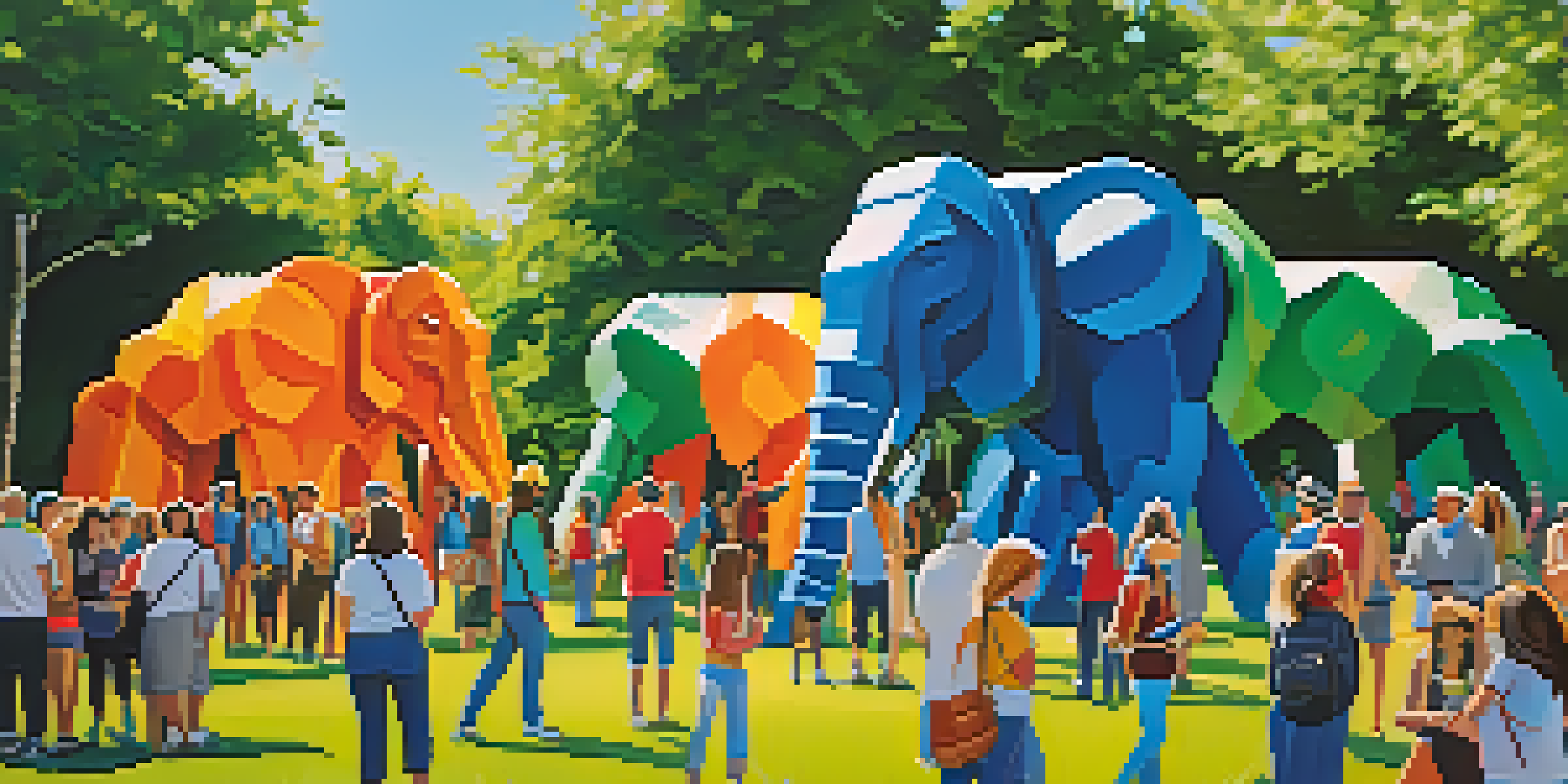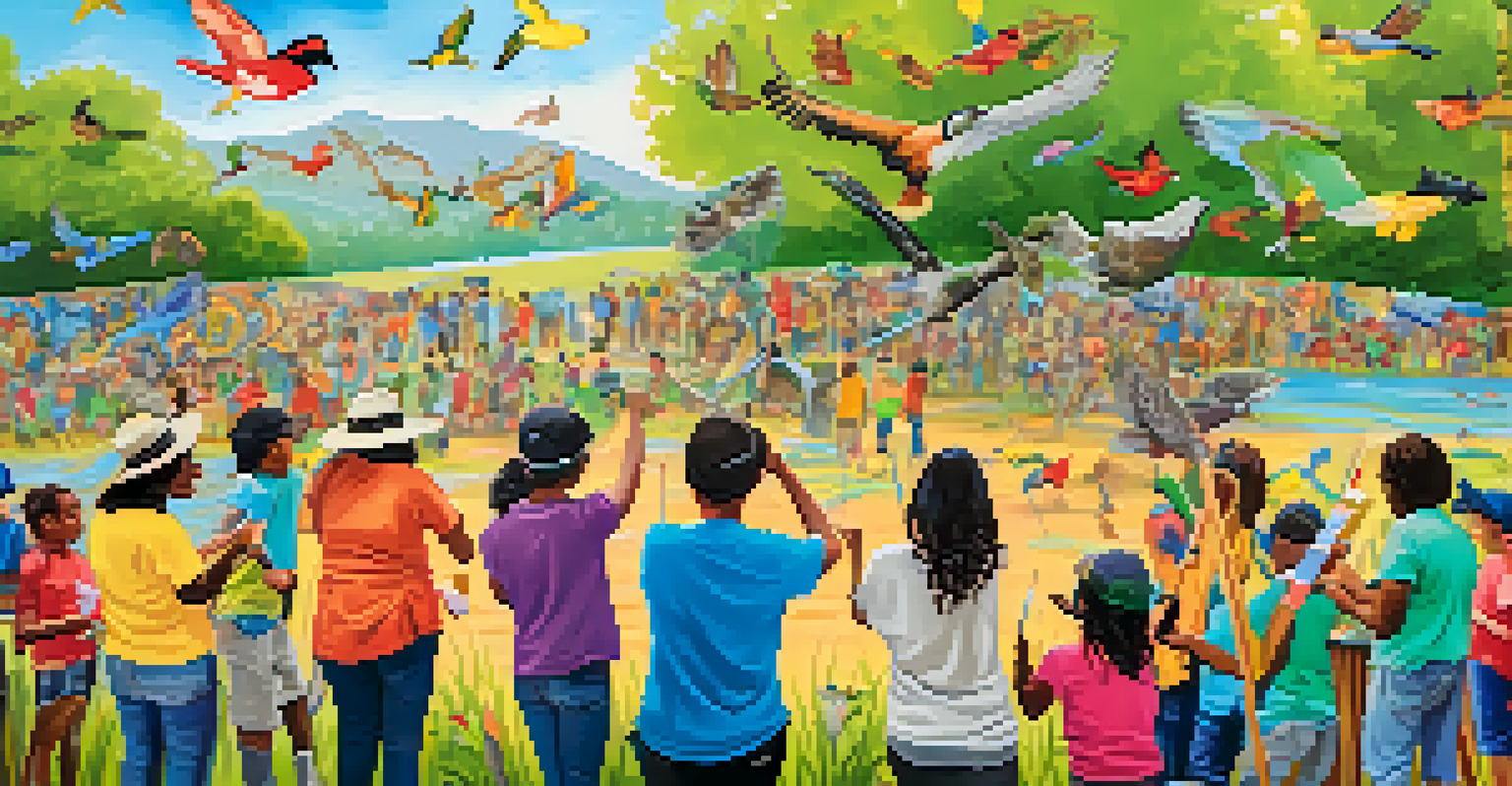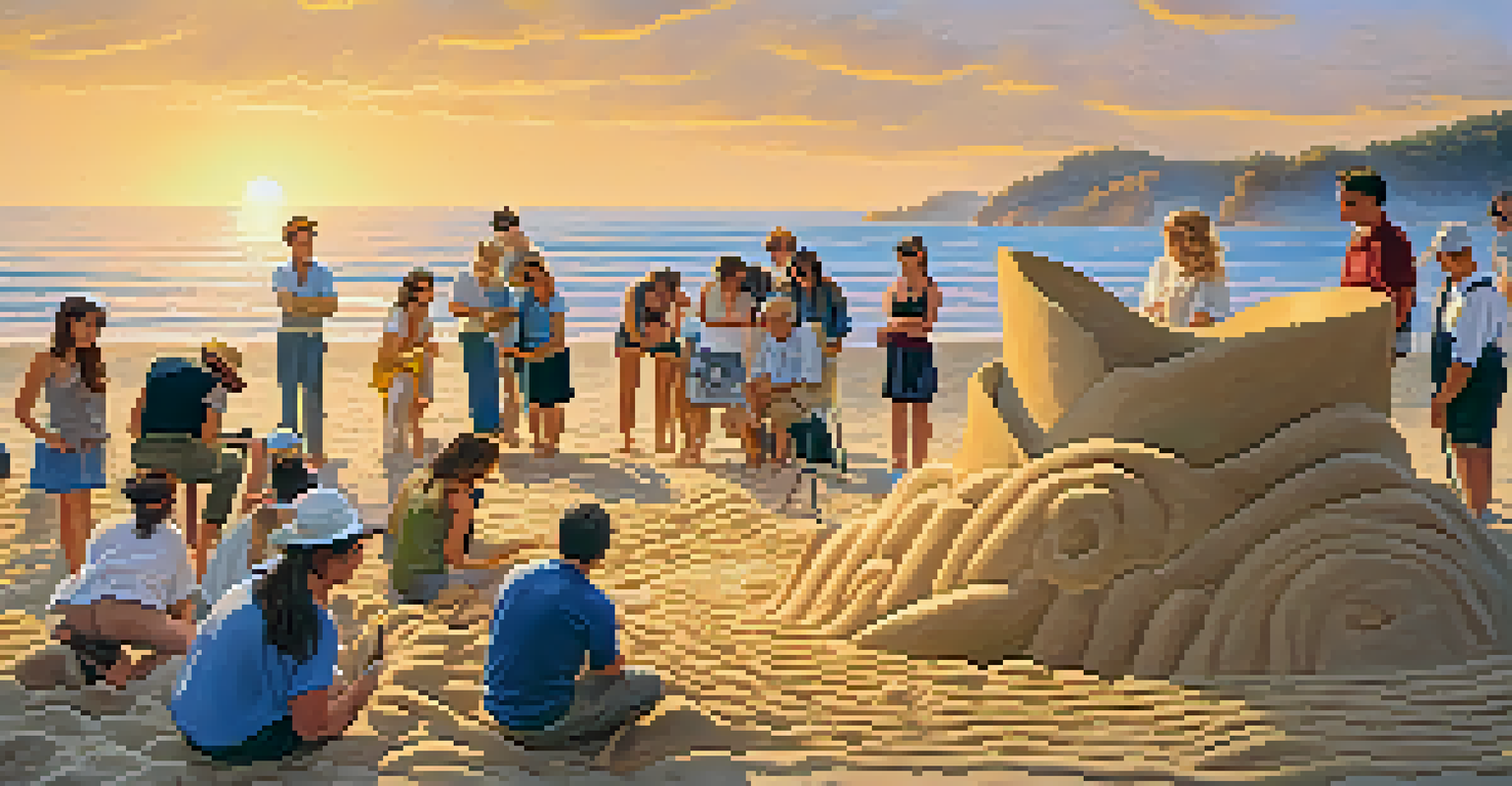Eco-Art Festivals: Celebrating Art and Environmental Activism

What Are Eco-Art Festivals and Their Purpose?
Eco-art festivals are vibrant gatherings that merge artistic expression with environmental activism. These events showcase a variety of art forms, including sculptures, installations, and performances, all focused on raising awareness about ecological issues. The primary goal is to inspire attendees to think critically about their relationship with nature and the impact of their actions on the planet.
Art is a way of recognizing ourselves and our place in the world. It can be a powerful tool for raising awareness about environmental issues.
By celebrating creativity, these festivals provide an engaging platform for artists to express their environmental concerns. They often highlight themes like climate change, pollution, and biodiversity loss, making complex issues accessible through visual and interactive art. Attendees can immerse themselves in thought-provoking pieces that challenge them to reconsider their habits and lifestyle choices.
Ultimately, eco-art festivals aim to foster community engagement and inspire collective action. By bringing together artists, activists, and the public, they create a space where dialogue about environmental responsibility can flourish. This collaborative atmosphere not only sparks creativity but also cultivates a sense of urgency and responsibility towards protecting our planet.
The Role of Artists in Environmental Activism
Artists play a crucial role in environmental activism, using their creative talents to communicate urgent messages about ecological issues. Through their work, they can evoke emotions and provoke thought in ways that traditional activism might not reach. For instance, a powerful installation made from recycled materials can visually demonstrate the impact of waste on our planet, leaving a lasting impression on viewers.

Moreover, artists often have the ability to reach diverse audiences, transcending barriers of language and culture. When they incorporate local environmental issues into their art, they can resonate more deeply with the community. This connection can inspire individuals to take action in their own lives, whether that means reducing waste or advocating for policy changes.
Eco-Art Festivals Unite Art and Nature
These vibrant events merge artistic expression with environmental activism to raise awareness about ecological issues.
In this way, artists serve as both creators and catalysts for change. Their ability to blend creativity with activism not only raises awareness but also motivates people to join the movement for a sustainable future. Eco-art festivals provide a unique platform for these artists to showcase their work and amplify their messages.
Notable Eco-Art Festivals Around the World
There are several renowned eco-art festivals globally that exemplify the fusion of art and environmentalism. One prominent example is the 'Land Art Generator Initiative,' which challenges artists and architects to create sustainable energy solutions through art. This festival encourages innovative designs that not only beautify spaces but also contribute to renewable energy production.
The artist’s job is to be a witness to the world. Through their creativity, they can inspire change and provoke thought about critical issues like sustainability.
Another notable festival is the 'Sculpture by the Sea' in Australia, where large-scale sculptures are displayed along coastal walks. This event highlights the beauty of nature while addressing climate change and ocean health through the artists’ works. Each sculpture invites viewers to contemplate their role in preserving the environment.
These festivals, among many others, showcase the diverse ways art can engage with environmental issues. By drawing attention to ecological concerns, they inspire attendees to think critically and act meaningfully in their own communities.
How Eco-Art Festivals Promote Sustainability
Eco-art festivals not only celebrate artistic expression but also promote sustainable practices among artists and attendees. Many of these events encourage the use of recycled or natural materials, showcasing how creativity can thrive without harming the environment. For example, artists might construct installations from repurposed items, turning waste into beautiful works of art.
In addition to showcasing eco-friendly art, these festivals often feature workshops and discussions focused on sustainability. Participants can learn about topics like composting, permaculture, and eco-friendly materials, empowering them to implement these practices in their own lives. This educational aspect reinforces the festival’s commitment to environmental stewardship.
Artists Drive Environmental Change
Through their creative work, artists evoke emotions and inspire action, making complex environmental issues more accessible to diverse audiences.
By integrating sustainability into every aspect of the festival, organizers send a powerful message about the importance of protecting our planet. Attendees leave not just inspired by the art but also equipped with practical knowledge on how to live more sustainably.
Community Engagement and Eco-Art Festivals
Community engagement is a cornerstone of eco-art festivals, creating a sense of belonging and shared purpose among attendees. These events often invite local artists and community members to contribute, fostering collaboration and strengthening local ties. This inclusive approach ensures that the festival reflects the unique environmental concerns and cultural heritage of the area.
Through interactive art installations and participatory workshops, festival-goers can engage directly with the themes of sustainability. For example, a community mural project may allow residents to express their thoughts on local environmental issues while beautifying their neighborhood. This hands-on involvement encourages a deeper connection to the art and the message behind it.
By highlighting the importance of community in environmental activism, eco-art festivals empower individuals to take ownership of their local ecosystems. When people come together to create and learn, they build a collective movement towards a more sustainable future.
Challenges Faced by Eco-Art Festivals
While eco-art festivals have a positive impact, they also face several challenges that can hinder their success. One significant issue is securing funding, as many of these festivals rely on grants, sponsorships, and donations. Limited financial resources can restrict the scale and scope of the events, impacting the diversity of artists and activities showcased.
Additionally, the logistics of organizing such festivals can be complex, especially when considering the environmental impact of large gatherings. Organizers must navigate waste management, transportation, and the carbon footprint of the event. Striking a balance between celebration and sustainability is a continuous challenge that requires innovative solutions.
Sustainability is a Festival Focus
Eco-art festivals promote sustainable practices by encouraging the use of recycled materials and offering educational workshops on eco-friendly living.
Despite these obstacles, many festival organizers are committed to overcoming them by fostering partnerships and exploring creative funding options. By addressing these challenges head-on, they can continue to promote art and environmental activism in meaningful ways.
The Future of Eco-Art Festivals
As awareness of environmental issues grows, the future of eco-art festivals looks promising. More artists are recognizing the importance of integrating sustainability into their work, and festivals are adapting to reflect these changes. We can expect to see an increase in innovative art forms that focus on renewable energy, biodiversity, and climate resilience.
Moreover, the rise of digital technology offers exciting opportunities for eco-art festivals. Virtual and augmented reality can create immersive experiences that educate attendees about environmental issues in engaging ways. This shift could broaden the reach of eco-art festivals, allowing for global participation and collaboration.

Ultimately, the future of eco-art festivals hinges on their ability to continuously engage communities and inspire action. By adapting to new challenges and technologies, these festivals can remain relevant and impactful in promoting a sustainable future.